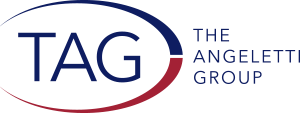With President Biden’s signature on the Consolidated Appropriations Act of 2023 (and the SECURE Act 2.0 package within it), new opportunities have opened for philanthropy. But some changes also require that fundraisers look at their promotional materials and begin their conversations with donors differently from the recent past. The Angeletti Group recommends fundraisers focus on four implications the act raises:
- For the first time ever, a donor 70½ or older may make a once-in-a-lifetime gift of up to $50,000 from an individual retirement account (IRA) to fund a charitable gift annuity (CGA) or a charitable remainder trust (CRT).
This provision should produce far more new CGAs than new CRTs. The $50,000 qualified charitable distribution (QCD) counts toward a donor’s required minimum distribution (RMD) from an IRA without increasing the donor’s taxable income. The gift will yield no charitable income-tax deduction, and all payouts will be fully taxable income. But such a gift allows donors to support their favorite cause by using a tax-disadvantaged asset and removing it from their estate. The donor may even realize higher income, depending on the donor’s age when creating a CGA. The Angeletti Group recommends against using this new provision to create a CRT without carefully considering the cost, tax, and management risks posed by such a minimally funded CRT.
- Individuals may still make gifts from IRAs of QCDs totaling up to $100,000 per year to charities (inclusive of the new $50,000 provision above), despite the act’s change to the age by which RMDs must begin.
Do not confuse the act’s change to the minimum age by which RMDs must begin with the minimum age at which QCDs may start. The SECURE Act 2.0 package inside the appropriations act raises the minimum age at which IRA owners must begin RMDs from age 72 to 73 in 2023 and to age 75 by 2033. Where applicable, change any promotional materials—electronic or paper—to mention the new minimum age for RMDs.
- Changes to the minimum age for RMDs have other implications for conversations with donors.
Encourage donors not to delay until age 73 any conversations with advisers and gift officers about what to do with their IRAs and other qualified retirement plans. Holders of 401(k) and 403(b) plans cannot make QCDs from those specific plans, but a relatively simple conversion into IRAs makes them available for QCDs. Conversations now with donors also keep a nonprofit’s mission top-of-mind. But in those conversations be careful to disclaim any intent to offer tax or legal advice. Encourage donors to consult their own qualified advisers, especially in making charitable beneficiary designations from any retirement plan. The complexity of recent changes in the law should lead all fundraisers to resist the temptation to pose as tax experts.
- The mission remains the message.
Talking first about giving vehicles and changes in tax law is not the best way to encourage a donor’s philanthropy. Engage. Tell a compelling story about changing the world. Show donors how they can become heroes in their own story. Then lead them to change the world too.
Should you have further questions or be in need of planned giving support and expertise, reach out to Ken Cole at Ken@theangelettigroup.com. Ken serves as Vice President, Gift Planning for The Angeletti Group and is the developer of TAG’s Planned Giving Launch Pad.
Further Reading
- The Secure 2.0 Act of 2022 Passes, Fidelity, January 3, 2023
- Charities Lose Fight to Persuade Lawmakers to Adopt New Giving Incentives, The Chronicle of Philanthropy, December 21, 2022
- SECURE Act: The Effect on Charitable Giving, Foundation for Carolinas, accessed on Jan 8, 2023
- SECURE 2.0 Paves the way for Big Changes, Breit, N., Gardner, R (Jan.6, 2023) Fiducient Advisors


